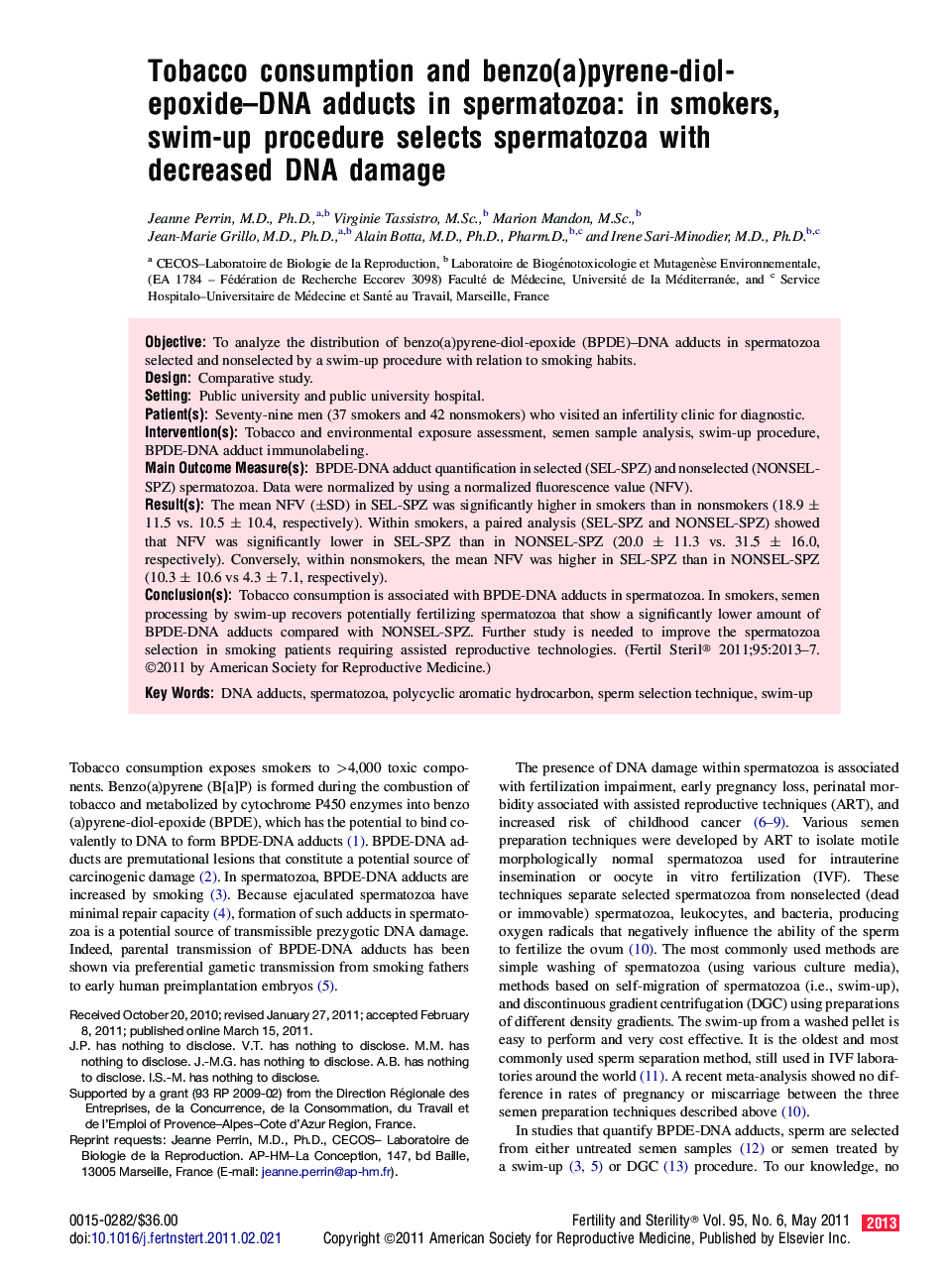| Article ID | Journal | Published Year | Pages | File Type |
|---|---|---|---|---|
| 3940074 | Fertility and Sterility | 2017 | 5 Pages |
ObjectiveTo analyze the distribution of benzo(a)pyrene-diol-epoxide (BPDE)–DNA adducts in spermatozoa selected and nonselected by a swim-up procedure with relation to smoking habits.DesignComparative study.SettingPublic university and public university hospital.Patient(s)Seventy-nine men (37 smokers and 42 nonsmokers) who visited an infertility clinic for diagnostic.Intervention(s)Tobacco and environmental exposure assessment, semen sample analysis, swim-up procedure, BPDE-DNA adduct immunolabeling.Main Outcome Measure(s)BPDE-DNA adduct quantification in selected (SEL-SPZ) and nonselected (NONSEL-SPZ) spermatozoa. Data were normalized by using a normalized fluorescence value (NFV).Result(s)The mean NFV (±SD) in SEL-SPZ was significantly higher in smokers than in nonsmokers (18.9 ± 11.5 vs. 10.5 ± 10.4, respectively). Within smokers, a paired analysis (SEL-SPZ and NONSEL-SPZ) showed that NFV was significantly lower in SEL-SPZ than in NONSEL-SPZ (20.0 ± 11.3 vs. 31.5 ± 16.0, respectively). Conversely, within nonsmokers, the mean NFV was higher in SEL-SPZ than in NONSEL-SPZ (10.3 ± 10.6 vs 4.3 ± 7.1, respectively).Conclusion(s)Tobacco consumption is associated with BPDE-DNA adducts in spermatozoa. In smokers, semen processing by swim-up recovers potentially fertilizing spermatozoa that show a significantly lower amount of BPDE-DNA adducts compared with NONSEL-SPZ. Further study is needed to improve the spermatozoa selection in smoking patients requiring assisted reproductive technologies.
